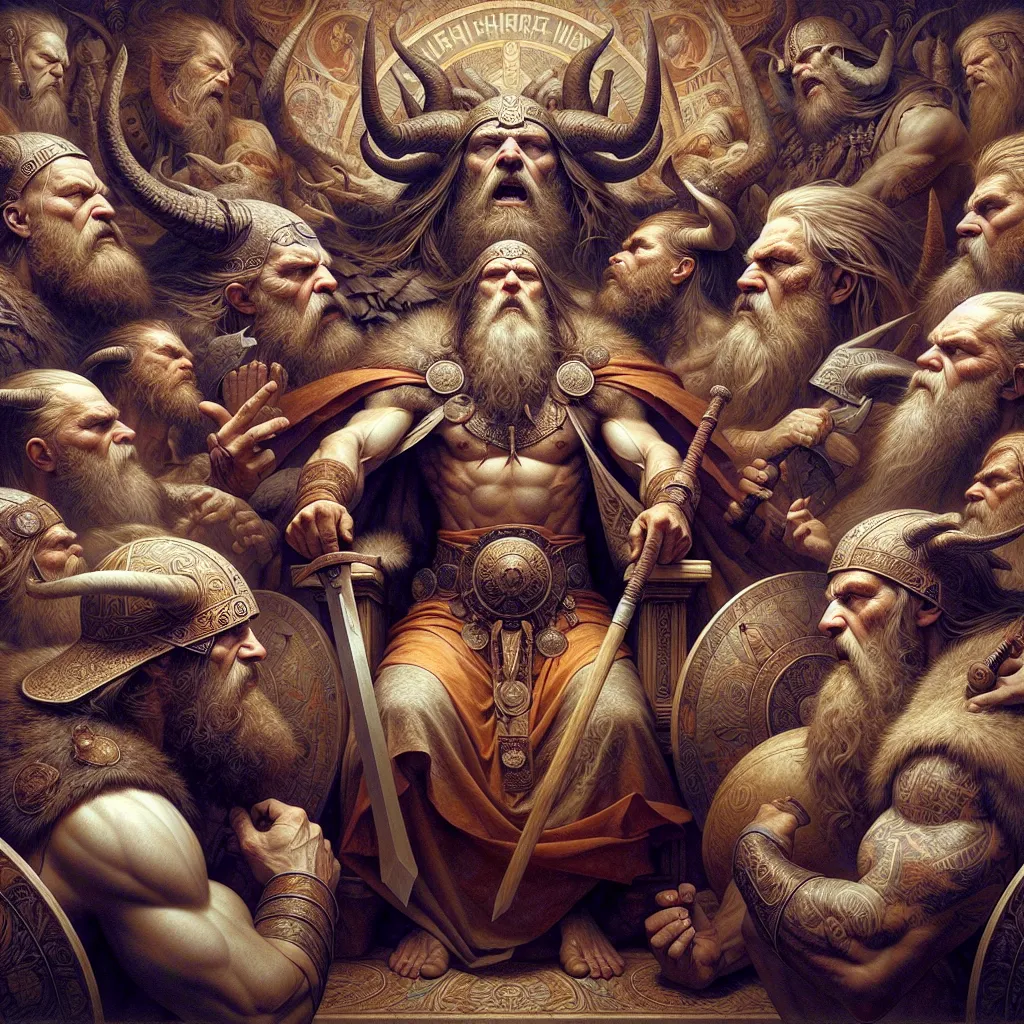
- Published on
- Authors

- Name
- You
The Berserkers: Warriors of Odin and Shamanic Practices
Introduction
The Berserkers, famed warriors of Odin, are figures that straddle the line between history and myth, embodying the ferocity and mystical elements of Norse warfare. These warriors were legendary not only for their unmatched combat skills but also for their shamanic practices and the intense battle frenzy they experienced. This article delves into their practices, exploring the blend of mystical wisdom and the scientific understanding of their phenomena.
The Legend of the Berserkers
The term Berserker comes from the Old Norse berserkr, which likely means "bear shirt," suggesting the warriors wore bear pelts into battle. Symbolically, this signified their transformation into a fearsome beast.
| Norse Term | Meaning | Implication |
|---|---|---|
| Berserkr | Bear Shirt | Transformative power and ferocity of a bear |
| Úlfhéðnar | Wolf Coat | Embodied the cunning and predatory nature of the wolf |
Berserkers were fear-inducing because they seemed invulnerable to pain and were often depicted as entering intense, trance-like states that allowed them to perform remarkable feats of strength and endurance.
Shamanic Elements of Berserker Practices
The Battle Frenzy (Berserkergang)
The most iconic aspect of Berserkers was their ability to enter a state of berserkergang, a fierce battle frenzy. Historical accounts suggest these states were induced through a combination of physical and ritualistic practices.
Inducing Berserkergang
Ritualistic Preparation
- Meditation and Chanting: Preparation often involved chanting, rhythmic drumming, and other trance-inducing rituals.
- Consumption of Psychoactive Substances: Some theories suggest that Berserkers consumed plants like the Amanita muscaria (fly agaric) mushroom, which has psychoactive properties.
- Animal Imitation: Adopting animalistic attire and behavior was part of their transformation, believing they harnessed the spirit of the beast.
Scientific Perspective
- Neurochemical Changes: The use of psychoactive substances and intense psychological preparation likely induced changes in neurotransmitter activity, particularly in serotonin and dopamine pathways, facilitating altered states of consciousness.
- Adrenaline Surge: The frenzy is characterized by a significant adrenaline release, enhancing physical performance and pain tolerance.
Shamanic Connections: One with the Gods
The Berserkers’ practices were deeply shamanic, involving a belief in transformation and communion with the gods, particularly Odin, the Allfather.
- Sacred Rituals: Berserkers often performed rituals invoking Odin, with the intention of gaining divine favor and embodying Odin's own ferocity and wisdom.
- Runic Magic: They used runes for protection and enhancement, believing these ancient symbols held mystical power that could guide and guard them in battle.
| Deity | Role | How Berserkers Connected |
|---|---|---|
| Odin | God of War and Wisdom | Invocations, offerings, and embodying Odin's attributes |
| Thor | God of Thunder and Strength | Seeking strength and protection in battle through prayers and rituals |
Conclusion
The Berserkers were more than mere warriors; they were shamanic figures whose practices blurred the lines between the mundane and the mystical. Their battle frenzy, achieved through ritual, psychoactive consumption, and a deep connection with the divine, reveals the sophisticated blending of science and mysticism that characterized Norse warrior culture. Understanding these fierce warriors offers us a glimpse into a rich tradition where the boundaries of reality, myth, and magick were intertwined.
References
- Davidson, H. R. Ellis. Gods and Myths of Northern Europe. Penguin Books, 1964.
- LaFountain, J. L. "Mushrooms and Mankind: The Impact of Psychoactive Mushrooms on History and Culture". Ethnobotanical Leaflets, 2006.
- Price, Neil S. The Viking Way: Religion and War in Late Iron Age Scandinavia. Oxbow Books, 2002.
